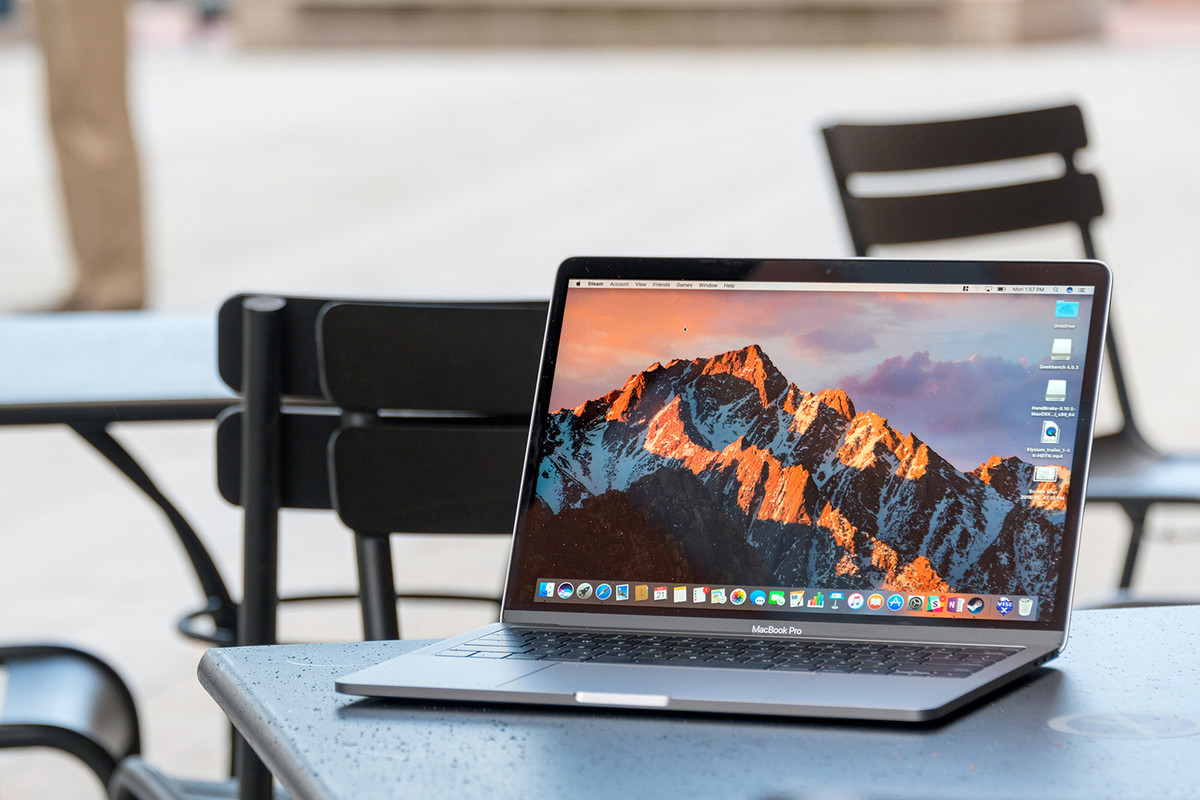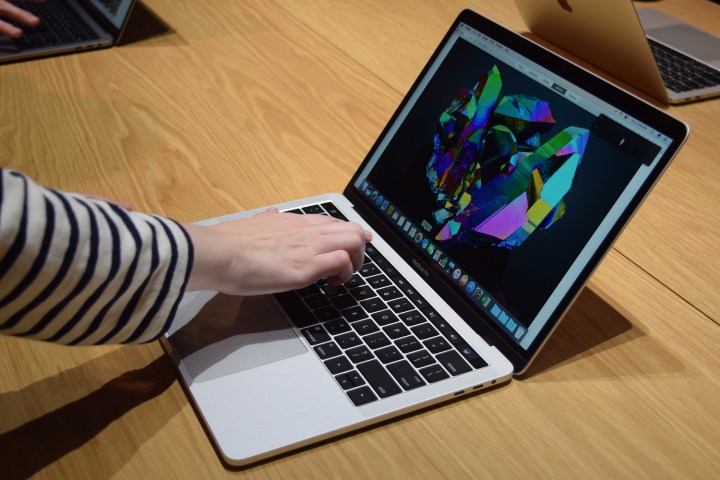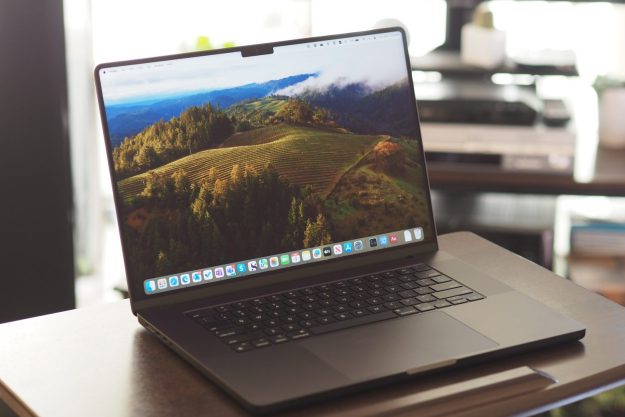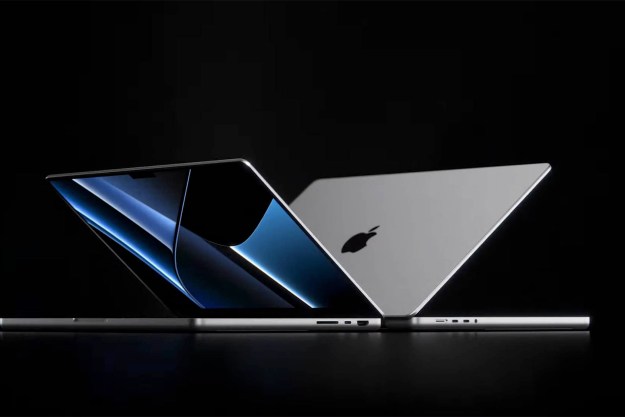
The wait for Apple to update its MacBook Pro is over. Despite sharing the same aesthetics as its late-2017 predecessor, the 2018 13-inch MacBook Pro is one of the most powerful laptops Apple has ever created. In rolling out the 2018 MacBook Pro update, Apple has discontinued older MacBook Pro models that did not ship with USB-C ports, and the company has kept the non-Touch Bar edition from last year unchanged as a budget-conscious option. In other words, if you want all the benefits of Apple’s 2018 vision, you’ll have to spring for the Touch Bar model this year.
On the surface, both the late 2017 and the 2018 models share the same slim and sleek unibody aluminum design. The latest model is loaded with even more powerful internals, a display that will entice creative professionals, and an updated keyboard design. Here’s all what has changed in 2018:
Design

Much of the design of the MacBook Pro remains unchanged from last year. Apple did make some refinements between generations that users may appreciate, including updating its keyboard. While the 2018 MacBook Pro continues to use Apple’s Butterfly key switches to fit the keyboard into a slim laptop enclosure, this year’s MacBook Pro ships with an updated third-generation keyboard design. Apple claims that the keys are quieter than before, but there have been no indication that they fix the sticky key issue.
Both generations of 13-inch MacBook Pro ships with a spacious Force Touch trackpad, and the higher-end configurations also come with a Touch Bar, which comes with Apple’s Touch ID fingerprint sensor. New to the 2018 model is Apple’s T2 co-processor, which delivers added security. It includes its own secure enclave and combines many of the system management controllers into one chip design. The T2 chip also brings on the fly encryption to your files as Apple is pushing for more privacy and security with its products.
One of the biggest changes introduced with the T2 chipset is that you’ll be able to call up Siri with just your voice on the 2018 MacBook Pro. Now, Siri can be summoned without any key presses.
Performance
The 2018 MacBook Pro with Touch Bar gets a powerful under-the-hood upgrade, thanks to Intel’s 8th-generation processor. The 2018 MacBook Pro starts with a 2.3GHz Intel quad-core 8th-generation Core i5 processor, but it can be upgraded to a 2.7Ghz quad-core 8th-generation Core i7 processor at the top configuration. Whereas last year’s model tops out with a dual-core processor, Apple claims that this year’s quad-core processor can deliver up to twice the performance on some applications. You also now have the option for up to 2TB of SSD storage.
Graphics performance is also upgraded on this year’s model, though you still won’t find a discrete graphics option on the 13-inch body. Instead of last year’s Intel Iris Plus Graphics 640 core, you’ll find Intel’s Iris Plus Graphics 655 this time around. With the updated integrated GPU, you’ll also have twice the video memory — 128MB of embedded DRAM — for better performance.
If you need even more powerful graphics capabilities, you’ll also have the option of connecting to an eGPU at your desk over the MacBook Pro’s Thunderbolt 3 port to bring desktop-class graphics performance.
Display

Although the basic Retina Display remains unchanged between last year’s model and the 2018 update — both displays comes with a bright 500-nit panel with a 2,560 x 1,600-pixel resolution — Apple has added its True Tone technology to this year’s laptop.
The screen tech initially debuted on the iPad Pro, and it allows the display to adjust the color and brightness automatically depending on the ambient lighting. Apple claims True Tone will deliver a more natural viewing experience, but until we try it out ourselves, we won’t know quite how the experience holds up.
Portability
Apple equipped the 2018 MacBook Pro with Touch Bar with a larger battery this year, moving from a 49.2 watt-hour to a 58 watt-hour battery. This means that this year’s Touch Bar model comes with a larger battery than the non-Touch Bar variant, which ships with the 54.5 watt-hour battery pack.
Yet, despite the larger battery capacity and a switch to Intel’s newest processor, Apple’s quoted battery life remains unchanged on the 2018 MacBook Pro 13-inch with Touch Bar. Apple claims that the laptop will be able to deliver up to 10 hours of wireless web browsing or 10 hours of iTunes video playback. We’ll have to test and see if there are any real-world battery life gain with the new processor, but from Apple’s marketing materials, it appears that the 2018 MacBook Pro was optimized around performance.
Both the 2017 and the 2018 model clocks in at just over three pounds in weight.
Ports
The port selection remains the same between last year’s MacBook Pro and this year’s model given that the overall design of the laptop is the same. Both variants support four Thunderbolt 3 connections over the USB-C ports. Although Apple justified its controversial decision to switch to USB-C as a move to embrace the future, unless you go all-in on the standard by updating all your cables, flash drives, and peripherals, there’s a good chance that you’ll be living with a bunch of dongles and adapters.
As an example, if you use an iPhone, you’ll either need an adapter to use the Lightning to USB cable that ships in the box, or you’ll have to splurge to get Apple’s Lightning to USB-C cable if you don’t want to carry around adapters.
The USB-C port is getting more useful, however, and Apple announced a Black Magic eGPU box that allows you to connect an external graphics card if the integrated Intel graphics isn’t good enough for you. This will make the MacBook Pro even more powerful when it’s docked to an eGPU at your desk.
Availability and pricing
Since Apple just refreshed the MacBook Pro with Touch Bar for 2018, you’ll be able to find some discounts on the late-2017 model if you don’t need all the performance improvements. The 2018 model slots in at the same $1,800 starting price as the outgoing 2017 models when they launched last year. However, fully configured with Apple’s build-to-order options, the price can quickly jump to $3,700.
With the latest refresh to the MacBook Pro lineup, Apple has created arguably some of the most powerful Mac laptops to date. Quad-core performance on Intel’s latest chipsets brings the MacBook Pro to parity with its Windows 10-powered counterpart, and the latest MacBook Pro will continue to be an appealing option for creative pros who rely on MacOS for their workflow.
With up to double the performance of last year’s model while retaining the same battery life, this year’s 13-inch MacBook Pro delivers a lot of power. Though you won’t notice any changes to the laptop’s design this year, you’ll find refinements that may be worth considering, including an improved keyboard experience and the ability to wake up Siri with your voice.
Editors' Recommendations
- Best refurbished MacBook deals: Get a MacBook Air for $140 and more
- Best laptop deals: Save on the Dell XPS 14, MacBook Pro 16 and more
- MacBook Pro OLED: Here’s everything we know so far
- Surface Pro 10: all the major changes rumored for the new model
- The XPS 16 is fighting an uphill battle against the MacBook Pro



